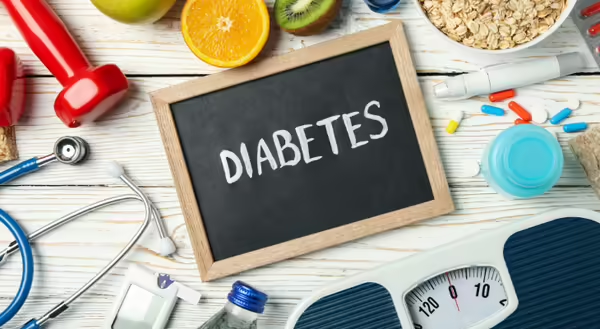
More than 37 million people in the United States have diabetes. If we put that number into a more understandable figure, just over 1 in 10 individuals have diabetes. If you find that statistic surprising, then learning that more than 1 in 3 U.S. adults have prediabetes may leave you shocked! I know it shocked me. However, what really surprised me is more than 80% of those with prediabetes do not realize they have it.
Diabetes occurs when your blood glucose, also called blood sugar, is too high. About 90-95% of people with diabetes have type 2 diabetes, making it the most common form. Type 2 diabetes often develops over many years, is generally related to lifestyle, and is usually diagnosed in adulthood. However, more and more teens and young adults are being diagnosed with type 2 diabetes. Diagnosed cases of type 2 diabetes among people under the age of 20 increased by 95% between 2001 to 2017.
Prediabetes occurs when blood sugar levels are higher than average but not yet high enough to be diagnosed as type 2 diabetes. If you have prediabetes, you must take steps to prevent or delay the progression to type 2 diabetes.
Know Your Risk
Although researchers do not fully understand why some people develop diabetes and others do not, they know excess body weight, poor diet, and lack of physical activity are major risk factors. Therefore, understanding your risk factors, and adopting healthy lifestyle changes, such as losing weight, eating healthy, and being more active, can dramatically decrease your risk of developing type 2 diabetes.
Managing Your Weight
Over the past 20 years, the number of adults diagnosed with diabetes has more than doubled as the American population has aged and become more overweight or obese. Being overweight or obese dramatically increases your risk of developing prediabetes and type 2 diabetes.
Weight is a sensitive issue for many, and getting to a healthy weight is much easier said than done. However, if you are overweight, losing as little as 5% to 7% of your current body weight can reduce your risk of diabetes. For a person weighing 180-pounds, that would be just 9 to 13 pounds. Losing weight not only reduces the risk of type 2 diabetes; it will also have a significant impact on your overall health. However, it is important to understand weight loss is just one component of reducing your risk.
Healthy Eating
Healthy eating is another vital element in reducing your risk of developing diabetes. However, healthy eating is complicated because it means different things to different people. When health educators talk about healthy eating, they are generally talking about following “The Dietary Guidelines for Americans.” These guidelines provide evidence-based nutrition information and advice for people across the lifespan. The recommendations aim to help Americans make healthy choices about food and beverages while considering the need to customize dietary selections based on personal culture and traditional preferences. They focus on incorporating a variety of fruits and vegetables, whole grains, low-fat dairy, and lean proteins while limiting the amount of saturated fat, added sugars, and sodium within your diet.
Being Active
The final component we are addressing today is physical activity. Regular physical activity is one of the most important things people can do to improve their overall health. Moving more and sitting less has tremendous health benefits for everyone, regardless of age or current fitness level.
Talk to Healthcare Provider and Get Screened
In addition to working towards reaching a healthy weight, eating healthy, and being more active, remember to talk with your healthcare provider. For a simple risk screening, check out the American Diabetes Association’s website and use their one-minute test at www.diabetes.org/risk-test.
Source: Diane Reinhold, MPH, MS, RDN Nutrition and Wellness Educator serving Jo Daviess, Stephenson & Winnebago Counties.
Want to read more, check out Walking the Line: A Journey of Wellness. This blog is intended to raise awareness and knowledge about health and wellness, inspire behavior change, share new skills, and validate that life is truly challenging. As we grow and learn together, it is my hope that each of us will look within ourselves and acknowledge our own personal choices and behaviors and how they contribute to our overall state of health and wellness. Please join me in this amazing adventure as we journey together, walking the line toward health and wellness.
References
New research uncovers concerning increases in youth living with diabetes in the U.S. Centers for Disease Control and Prevention
Type 2 Diabetes. Centers for Disease Control and Prevention
Prediabetes - Your Chance to Prevent Type 2 Diabetes. Centers for Disease Control and Prevention
Dietary Guidelines for Americans, U.S. Department of Agriculture and U.S. Department of Health and Human Services.